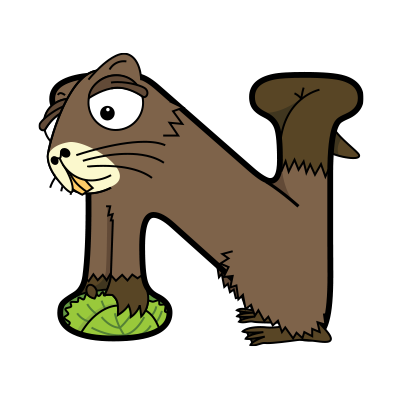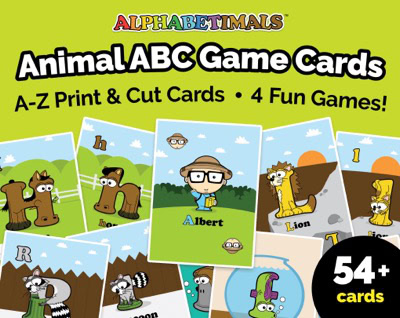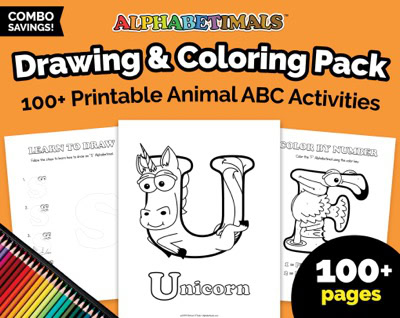
Nutria are large, semi-aquatic rodents that look like a mix between a big rat and a beaver. They have soft brown fur, long whiskers, bright orange front teeth, and a long, round tail. These friendly and curious animals enjoy swimming and exploring wetlands.
Watch a Nutria in Action!
See how nutritas swim, nibble plants, and play around water.
What is a Nutria?
Nutria are herbivorous, semi-aquatic rodents from South America.
- Have webbed back feet for swimming
- Have bright orange, ever‑growing teeth
- Live in burrows near water
- Can grow up to be big like a small dog
Where do Nutrias live?
Nutria originally came from South America, but people brought them to other places. They now live in many countries around the world.
- Native to Argentina, Chile, Uruguay, Paraguay, southern Brazil and Bolivia
- Introduced to North America, Europe and Asia
- Live near rivers, lakes, marshes and wetlands
What do Nutrias eat?
Nutria eat lots of wetland plants and sometimes roots.
- Nibble on cattails, reeds and aquatic grasses
- Also eat roots and plant stems
- Sometimes eat garden plants like corn or lettuce
How big is a Nutria?
Nutria are about the size of a small dog!
- Body length: about 40–60 cm (16–24 in)
- Tail adds another 30–45 cm (12–18 in)
- Weight: usually 5–10 kg (11–22 lb) – about as heavy as a large backpack
What sound do Nutrias make?
Nutrias make grunting and moo‑like sounds to talk to each other.
Cool Nutria Facts
- Nutrias can swim underwater and stay down for about eight minutes
- They eat about a quarter of their body weight in plants each day
- They have orange teeth because of iron in their enamel
- They make feeding platforms by cutting plants and piling them up in the water
- Baby nutria can swim when they are just two months old
- They can have 1 to 13 babies at once, but usually 4
- Nutrias live around 3–4 years in the wild
- They use abandoned beaver or muskrat burrows too
Printables and coloring fun
Have fun coloring and playing with nutria!
Nutrias in the Eco-system
Nutrias are important but can cause problems in wetlands.
- They help control plant growth
- They are not endangered – their global status is “least concern”
- In places where they are not native, they can damage marshes by digging and eating too much
- Populations can grow fast because females can have two litters per year
Ask a grown-up to help you learn more
If you want more cool facts, check these kid-friendly pages with help:
- National Geographic: Nutria
- Nutria | Description, Invasive Species, Muskrat, & Facts
- Wikipedia – Nutria
Fun questions about Nutrias
A nutria is a large, rodent that likes to swim and munch on plants.
They live near rivers, lakes, and marshes in South America and many other countries.
They eat water plants, roots, and sometimes garden veggies.
They can grow as big as a small dog and weigh up to about 10 kg (22 lb).
Yes! They use their webbed back feet to swim and can stay underwater for up to eight minutes.
Nutria make grunts and sounds like “moo” to talk to friends.
A mom nutria can have 1 to 13 babies at once, but usually about 4.
No, they are not endangered and are listed as “least concern.”
They help shape wetlands by eating plants, but too many can harm the environment.
Maybe! If you live near water, you might spot one swimming or eating plants.
Ways to donate and support Nutrias
You can help protect wetland homes and learn more about how to care for animals like nutria.
Sources: Wikipedia, Live Science, Creative Commons, Britannica.com and Freesound.org

Alphabetical list of animals that start with N
A full alphabetical list of popular animal names that begin with the letter N for toddlers and preschool kids.
Which one should be the next Alphabetimal? Let us know on our facebook page.
All animals A-Z
Animal phonics alphabet
Animals that start with common phonics digraphs
Animal facts for kids
Other animal collections
Try our Printable Alphabet Worksheets! Download a FREE SAMPLE or preview all 200+ on Etsy.com or TeachersPayTeachers.com



